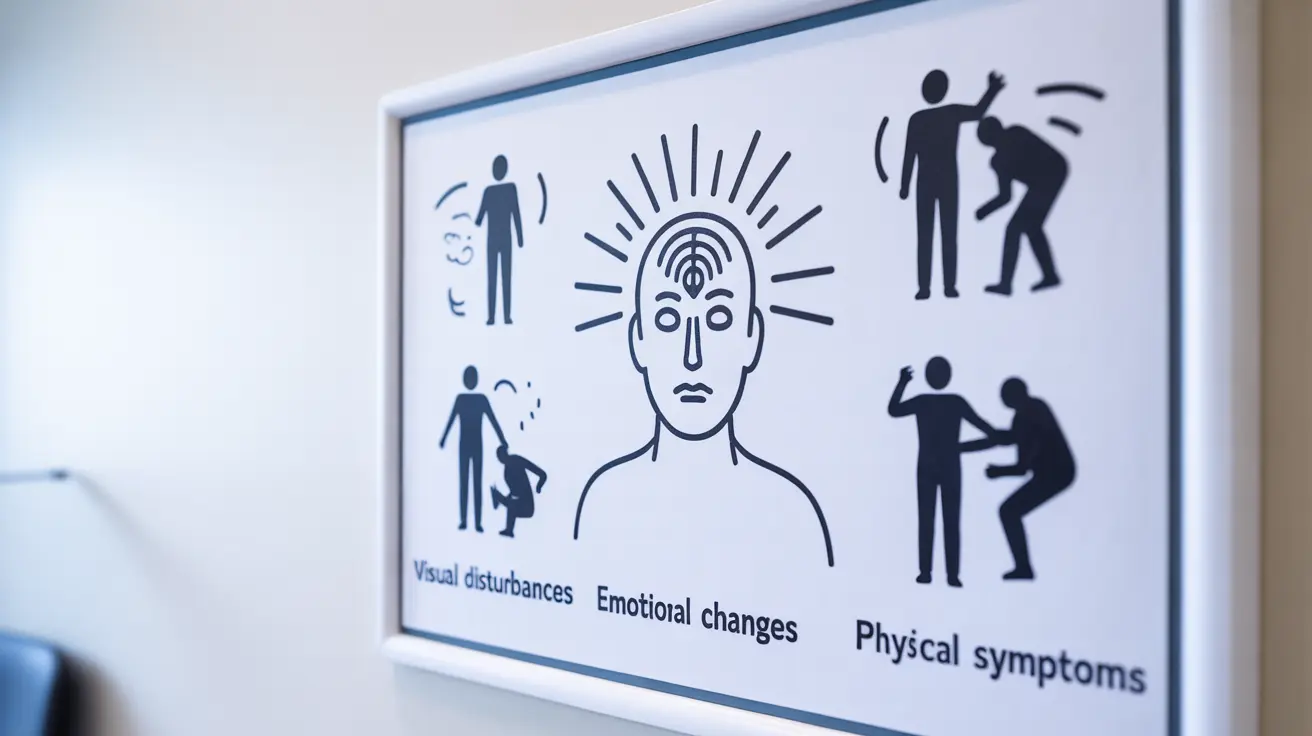Recognizing the early warning signs that a seizure is coming can be crucial for both people with epilepsy and their caregivers. These warning signs, also known as prodromal symptoms or auras, can occur minutes to hours before a seizure, providing valuable time to take safety precautions and potentially prevent injury.
Understanding these warning signs not only helps in managing seizure episodes more effectively but also enables individuals to maintain better control over their daily activities and overall quality of life. Let's explore the various signs that may indicate an approaching seizure and learn how to respond appropriately.
Common Warning Signs Before a Seizure
The warning signs of an approaching seizure can vary significantly among individuals. Some people may experience multiple signs, while others might notice just one or two consistent indicators. Here are the most common warning signs:
Sensory Changes
Many people experience distinct sensory alterations before a seizure, including:
- Strange tastes or smells
- Visual disturbances or hallucinations
- Unusual sounds or ringing in the ears
- Tingling sensations in the body
Emotional and Behavioral Changes
Psychological symptoms often precede a seizure and may include:
- Sudden mood swings
- Increased anxiety or fear
- Irritability
- Difficulty concentrating
- Feeling of déjà vu
Physical Symptoms
Physical warning signs can manifest as:
- Headache
- Dizziness
- Nausea
- Changes in heart rate
- Sweating
- Weakness in limbs
Understanding Seizure Auras
A seizure aura is a specific type of warning sign that actually represents the beginning of a focal seizure. Unlike general warning signs that may occur hours before, auras typically happen just moments before the main seizure event.
Characteristics of Seizure Auras
Common aura experiences include:
- Visual phenomena like flashing lights or spots
- Strong emotions or feelings of impending doom
- Stomach discomfort or "butterflies"
- Unusual smells, tastes, or sounds that others can't detect
Safety Measures and Response
When experiencing warning signs of an approaching seizure, taking immediate action is crucial for safety:
Immediate Steps to Take
- Move to a safe place away from hazards
- Sit or lie down
- Alert someone nearby if possible
- Take prescribed rescue medication if recommended by your healthcare provider
- Remove glasses and loosen tight clothing
Long-term Management
Tracking warning signs can help improve seizure management:
- Keep a detailed seizure diary
- Note patterns in timing and types of warning signs
- Share this information with healthcare providers
- Identify and avoid potential triggers
Frequently Asked Questions
What are the most common warning signs that a seizure is coming, and how early can they appear? Warning signs can appear minutes to several hours before a seizure. Common signs include mood changes, sensory disturbances, headaches, and feelings of anxiety or déjà vu. The timing varies significantly among individuals.
What does a seizure aura feel like, and how is it different from early mood or behavior changes before a seizure? A seizure aura is actually the first part of a focal seizure and occurs immediately before the main seizure. It can include visual disturbances, unusual smells, or strong emotions. Unlike general warning signs that may occur hours before, auras are immediate precursors to seizures.
Can you have seizure warning signs without losing consciousness, and what should you do if you notice them? Yes, you can experience warning signs without losing consciousness. If you notice these signs, immediately move to a safe place, sit or lie down, alert someone if possible, and take any prescribed rescue medication.
Are there different types of seizure warning signs for different types of seizures, and do they always happen before every seizure? Yes, different types of seizures may have different warning signs. However, not everyone experiences warning signs, and they may not occur before every seizure. Some people have consistent warning signs, while others may have none at all.
What practical steps can someone take if they notice early signs that they might have a seizure? When noticing early signs, take immediate safety precautions: move to a safe place, alert others, take prescribed medication if applicable, remove hazardous objects, and lie down. Long-term, maintain a seizure diary to track patterns and share information with healthcare providers.




